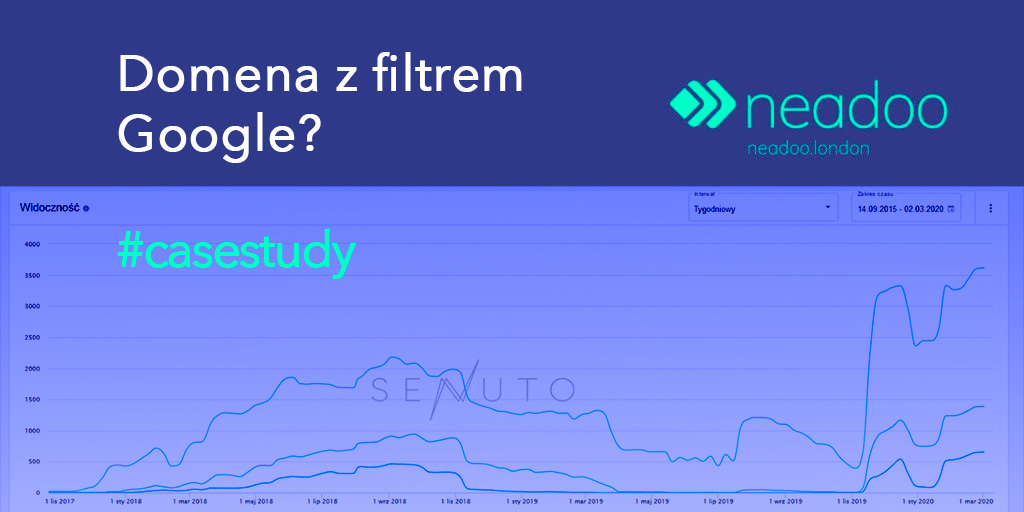
Case study – Domain with Google algorithmic filter/penalty
What happens if Google flags your website for “unusual activity”? Is there any way to restore traffic to your website after a sudden drop-off? How do you deal with algorithmic filters placed on your website? These are questions businesses often ask when they experience a sudden drop in traffic and visibility.
The causes for sudden drops in traffic are often complex, and Google and other search engines refuse to comment on their closely guarded algorithms. This often leaves businesses and entrepreneurs frustrated with no solution in sight.
You can still restore your website’s traffic, however, as our latest case study demonstrates. We’ll share our experience with a client that was precisely suffering from these issues. After conducting a detailed audit and taking steps to improve his SEO profile, we effectively increased the visibility of the client’s website. If you want to learn how we managed it, read on!
Introducing The Case
The client got in touch in May 2019 after his website recorded a significant decrease in organic traffic accompanied by his website falling off on search engine results pages for a range of keywords. The image below demonstrates the impact this had on the client’s website, virtually killing it:
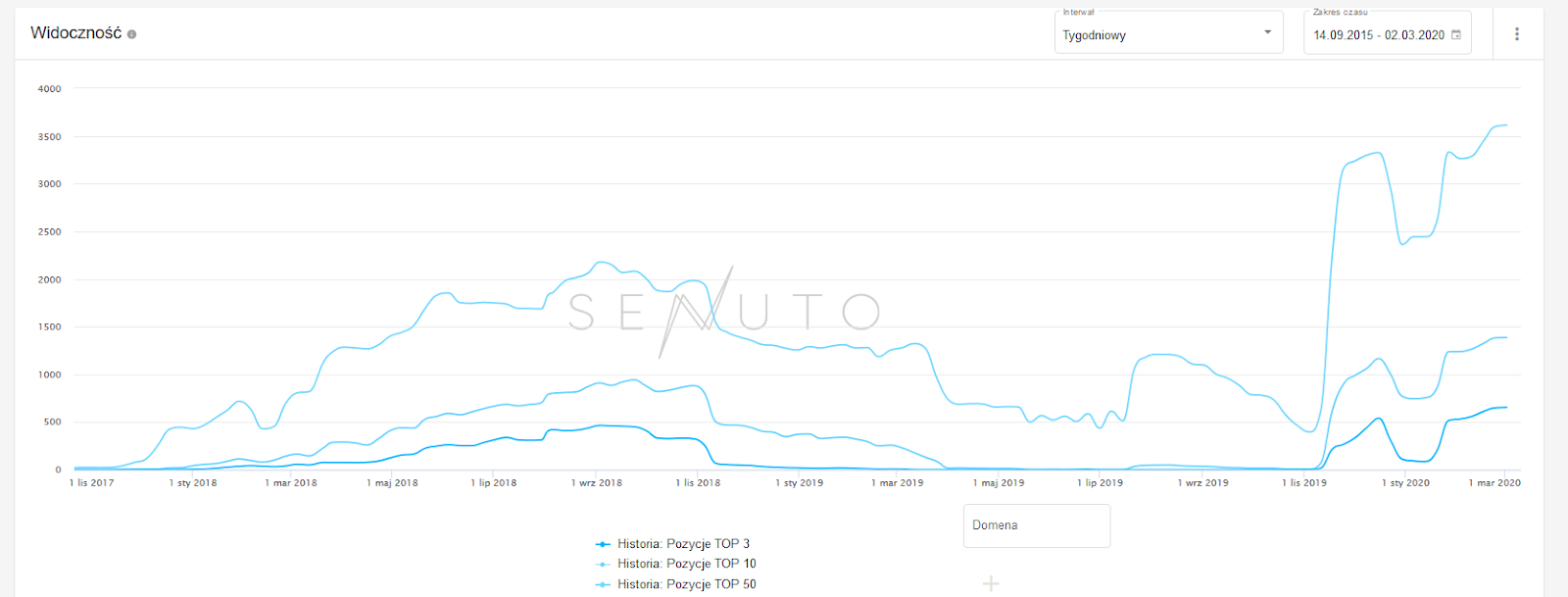
Crossreferencing the Drop in Traffic with Changes to Google’s Algorithm
Though Google is very secretive about its algorithm, updates to it, and the timing of its rollout. They often release press statements and technical blog posts outlining the changes in broad strokes.
Our first task was clear. We needed to check the precise timing of the fall-off in traffic and see if it coincided with any of the updates to Google’s search engine algorithms. Determining whether an update to the algorithm was the cause of the drop in traffic and which update precisely will be a great boon in determining the precise reasons behind it.
Here, we analyzed the performance of our client’s website across multiple locations. Large algorithm updates are often rolled out in stages across different data centers, which each serve certain locales. Potential discrepancies in performance in different locations are a great indicator that an algorithm update is responsible.
Inheritance and Competition Analysis
After some investigative work, we identified that the client’s site experienced a significant drop in October, which coincided with the sizable August 2018 Google algorithm update affecting sites in the YMYL (Your Money Your Life) category.
In this context, we cautioned the client against making significant changes to the site, as algorithms need a few weeks to adjust — you often need to wait for the dust to settle, as it were.
This, however, doesn’t mean we waited empty-handed. Instead, we immediately proceeded to do a comprehensive analysis of our client’s direct competitors to see how they’ve fared recently. Our analysis did not show similar declines among other market players, which helped us exclude a number of factors that could have contributed to the decline in the traffic to the client’s website.
Google Algorithmic Analysis – Off-site audit – incoming links and preparation of a disavow file
One key indicator Google and other search engines use to flag what they consider suspicious websites is by the quality and the nature of links pointing to the website. If a website has a large number of low-quality, “spammy” links pointing to it, Google will often consider it algorithm manipulation and penalize the website.
This is why the next step on our agenda was analyzing the quality, quantity, and nature of links pointing to our client’s website. We undertook a comprehensive audit of incoming links. Using various tools such as Google Search Console (GSC) and Majestic, we collected the data necessary to analyze the site’s link profile.
We focused on several qualitative and quantitative pieces of information:
- TrustFlow and CitationFlow,
- types of links,
- anchors,
- URLs to which links lead,
- domain themes and link page titles.
During our investigation, our attention was particularly drawn to the rapid increase in links over the last 5 months by a rate of almost 400%. These even included high-value links from domains with a high Domain Rating (DR) as well as sponsored articles, which Google might flag as unnatural link acquisition.
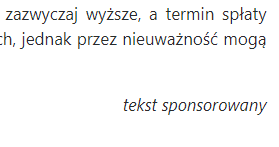
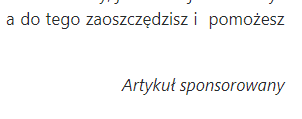
Disavow Tool
Google gives website owners the ability to “disavow” certain links pointing to their domain using a tool aptly named the “disavow tool.” While there are differing opinions on the effectiveness of the tool in eliminating the impact of harmful links, in our experience, it is worth taking harmful links seriously and taking steps to eliminate their potential impact.
Coming back to the client’s website, after properly analyzing its link profile and classifying the links pointing to it, we submitted about 10% of the links that could negatively affect the website’s rating by search engine algorithms to Google’s disavow tool.
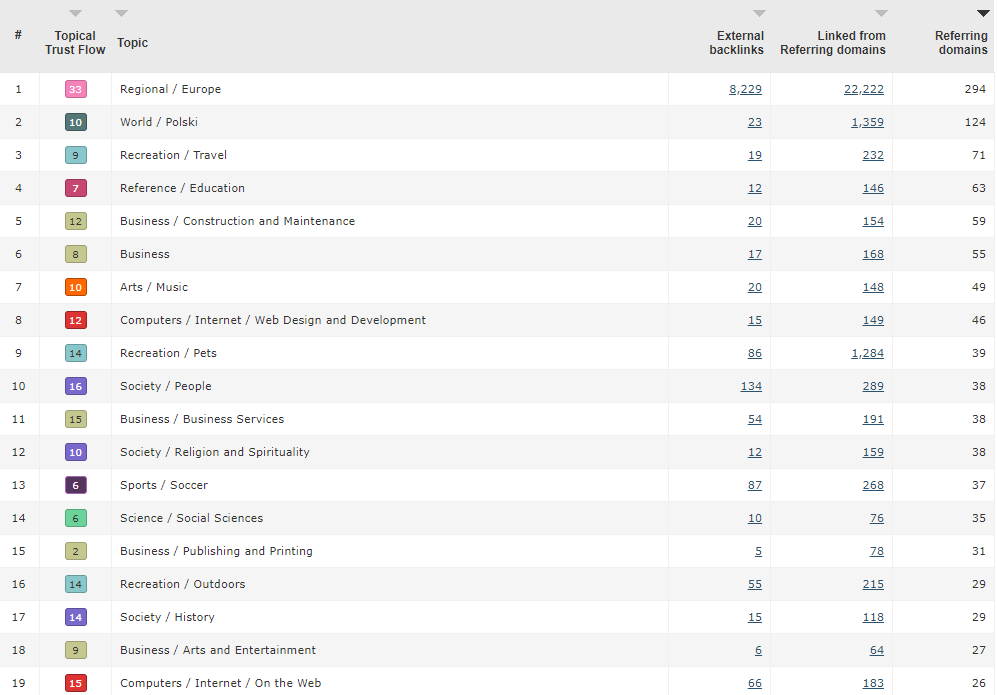
As part of this strategy, we also decided to modify and redirect some suspicious URLs. We believe these actions are crucial in situations where the website’s standing is at risk.
Modifying Sponsored Links
Sponsored content is generally considered okay, but if the strategy is too aggressive and too “unnatural” it is often flagged by Google, which can be a substantial hit to a business’s marketing strategy.
This was part of the issue our client was suffering from. That’s why we next focused on improving the link profile coming from sponsored articles. To adapt them to a more natural feel. We modified approximately 40% of the anchors and URLs in these articles to better reflect natural linking patterns.
Contacting Domain Owners
To change the nature, anchor, and URL of links pointing to a client’s domain, you need to get in touch with the domain owner and explain the situation to him. If many links are pointing to a website, contacting each domain owner individually can be a very daunting and laborious task if done manually.
This is why we used the Screaming Frog tool to automate the process of obtaining the contact information of domain owners. By sending personalized messages to website owners and editors, we managed to quickly implement the changes our client’s website needed.
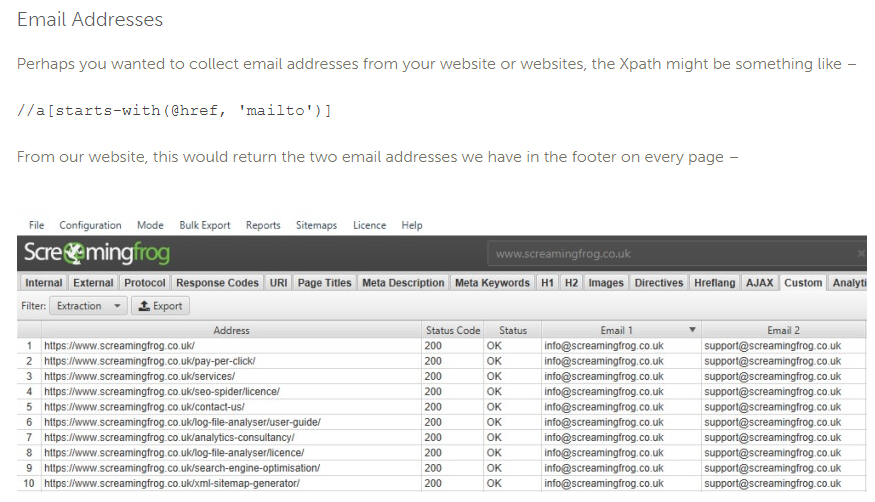
source: https://www.screamingfrog.co.uk/web-scraping/
Other SEO Activities
Though the primary purpose of our work with the client was to restore the website’s standing, we also included additional optimizations that not only benefited the website’s standing but also secondary and general SEO improvements. This, we believe, contributed to organic traffic returning to the client’s website stronger than ever.
Technical Audit
Part of this strategy was a technical audit of the client’s website. We focused on eliminating errors that may have occurred during the creation and development of the website, with particular attention paid to errors related to the implementation of AggregateRating, which could result in a filter being imposed by search engine algorithms.
Content Analysis and Optimization
When analyzing the content on the website, we decided to improve, rewrite, and restructure some pieces of content on the client’s website to make them appear more natural. We paid particular attention to landing pages that previously did well in search results but were saturated with keywords and might’ve been flagged by recent changes to the algorithm. These pages had potential, and our goal was to create more natural and user-friendly content that would help them not only return to but surpass their previous results.
Final Results
Just seven months after we started working with the client, we already saw significant results.
There was a gradual but very noticeable improvement in the position of individual subpages, which began to regain and surpass their prior performance in the search results. Many subpages that previously only managed to occupy the 19th or 20th position in a search result now could easily be seen in the 1st, 2nd, or 3rd positions.
At the end of November and the beginning of December, our client regained all of his lost traffic. Not long thereafter we recorded an increase in traffic vis-a-vis historic highs, which were directly thanks to increased traffic from new keywords.
Currently, our client’s website consistently ranks among the top results for the most competitive phrases.
Algorithmic Penalty Removal – Summary
This case study hopefully shows how important it is to understand search engine algorithms and adapt your SEO strategy to them. Loss in traffic happens — there’s no need to panic. A comprehensive strategy that can pinpoint the issues and address them can easily help you restore previous traffic and even surpass it. It is all about competently carrying out a well-planned strategy.
🌟 TL;DR:
📉 Position drops? Don’t panic! — Regularly monitor information about algorithm changes and audit your website to detect and fix errors. Also, observe how your competitors have fared.
🔍 Analyze current strategies — Techniques that once worked might need to be adjusted and changed as algorithms get more sophisticated.
🌐 Focus on natural SEO — Consistent, long-term, and natural SEO methods can bring great results, even if your website has previously been flagged by search engines.
🔗 Link profile audit — Don’t limit yourself to just eliminating harmful links. Also analyze the structure of links, website topics, and other elements that can impact how natural links appear.
📈 Stable strategy = Stable results — By sticking to a well-planned SEO strategy, you don’t have to worry about temporary position drops. A rash strategy might temporarily get you ahead, but only a well-thought-out strategy will allow you to consistently see results.